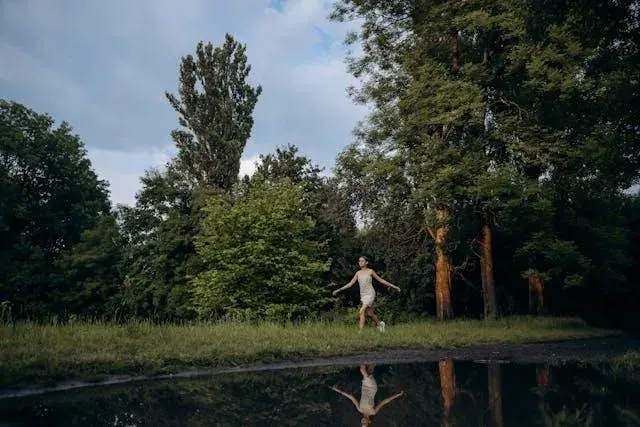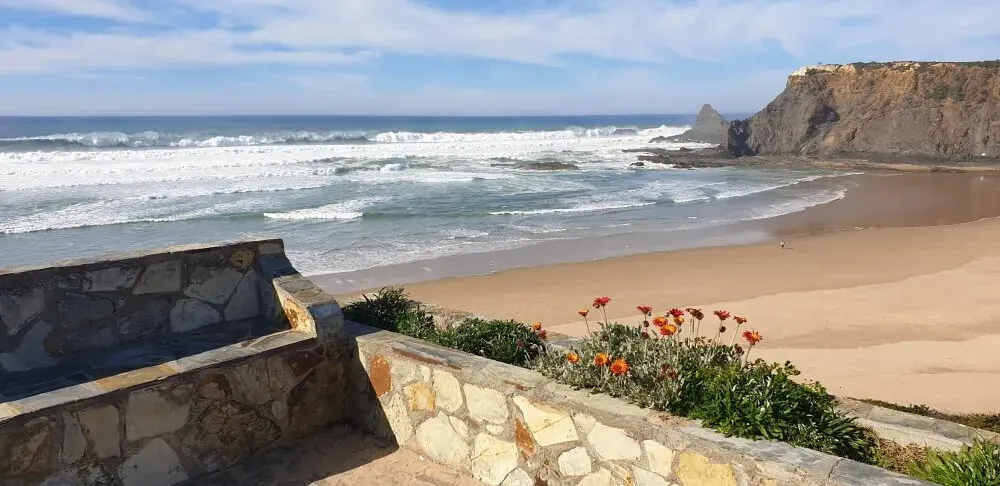
Discovering Rural Tourism in the Alentejo: A Guide to Unforgettable Experiences
Admin
March 16, 2025
1173 words
6 minutes
Fed up with “mainstream” tourism, more and more tourists are looking to combine their vacations with a more immersive experience with the local communities and, above all, with greater peace and quiet than in the big cities.
This is the basis of rural tourism, a branch of tourism that is gaining ground in Portugal, especially in the more forgotten areas of the country, such as the Alentejo.
By emphasizing the connection to local traditions with the best of rurality and the rich Alentejo gastronomy, rural tourism in the Alentejo affirms its sustainability by offering tourists a complete and diversified offer that respects the cycles of nature and local communities and where there is no shortage of things to see, do and taste.
Rural tourism in the Alentejo: what to do?
If the peacefulness and silence of welcoming communities is the hallmark of the Alentejo, it doesn’t mean that this is all the region has to offer.
• Walking Tours
Proof of an Alentejo that is alive and full of adventures waiting to be experienced are the walks offered by Top Walking Tours, which take tourists along trails where exuberant nature is joined by landmarks from the historical and social development of a region marked by agricultural work.
On one of these walks, we are taken from Herdade de Santo Isidro in Meada to Monforte in 10 days.
As well as tasting the best flavors that the Alentejo has to offer and enjoying the most comfortable and stunning accommodation in some of the most beautiful hotels in the Alentejo, during this walking tour we will be able to travel back to megalithic times in the Coureleiros Megalithic Park.
This is a place where we can see the largest menhir on the Iberian Peninsula, visit the ancient Roman city of Ammaia or the medieval castle of Castelo de Vide, enter the “Martian” Cabeço de Vide (a place that NASA says is similar to Mars) and bathe in the river beach of the Termas de Sulfúrea garden.
Almost like a traveling companion who guarantees us protection along the way, we’ll be embraced by the leafy groves of olive trees and cork oaks of the protected Alentejo Montado which, as well as providing shade, ensure that the region is home to Portugal’s best olive oils and cork.
Note: ARS Alentejo and Top Walking Tours do not recommend this tour between June and September due to the high temperatures that are usually experienced in the region.
• Hot air balloon rides
Due to its orography, the Alentejo is a prime location for hot air balloon rides.
In Monsaraz, the Portuguese capital of hot air ballooning, you can enjoy fantastic balloon rides over the Alentejo plain and see the Alqueva reservoir in all its splendor.
Note that between February and October, these balloon rides only take place at dawn, while between November and March there are two “launches”: one at dawn and the other in the late afternoon.
• Horseback riding
Speaking of Alqueva, next to what is Europe’s largest artificial lake, you can put your riding skills to the test and take a horseback ride, with riding lessons included, through the region’s many estates.
Still in the equine field, take the opportunity to visit the majestic Alter Stud Farm, an institution created in 1748 by King João V and dedicated to the breeding and education of Lusitano thoroughbred horses.
• Rafting on the Guadiana
To contrast with the beauty and peacefulness of the surrounding landscape, in Serpa you can try something more radical: a rafting trip on the Guadiana.
Gather your family and friends and go over the sequences of fast and fun rapids that the Guadiana has to offer. Because, after all, we’re still in the Alentejo, the excitement of the more radical moments of the journey are tempered by stunning, peaceful landscapes.
Rural tourism in the Alentejo: where to stay?
Whether in Portalegre, Évora or Beja, the rural tourist accommodation on offer in the Alentejo is varied and generous, ranging from charming hotels and pousadas to exquisite glamping.
Throughout our journey on the Top Walking Tours, for example, we’ll be able to stay in some of the most stunning accommodations in the Alto Alentejo, such as Casa Amarela (a national monument).
Also the Monastery of Santa Maria de Flor da Rosa (a heritage site dating back to 1356 and combining Moorish and Renaissance elements) or Quinta do Cabeçote where, in addition to the rooms, visitors can stay in one of the three traditional Alentejo houses decorated to perfection on the estate.
Because we’re talking about typical Alentejo buildings, a word for Monte do Serrado de Baixo, in Évora, which combines traditional rural architecture with thick walls and the typical Alentejo blue bar with a spectacular garden lined with leafy holm oak trees.
A word for the decoration of the rooms, which emulate the Alentejo landscape, and for the common room, where a huge floor fireplace nestles.
For those who prefer a less traditional approach and are looking for a glamping experience in the Alentejo, we recommend Bubulcus & Bolotas in Arraiolos.
The tents at this ecological and sustainable tourist resort are set up in an area of untouched holm oak forest and each one has a generous private area.
It should be noted that 100% of the electricity is generated by wind power, rainwater is stored and the wood for heating the coldest winter nights comes from clearing the surrounding trees.
Rural tourism in the Alentejo: what to eat?
After a hike or a rafting trip down the Guadiana, it’s time to fill your stomach with some of the Alentejo’s tastiest delicacies, which we recommend:
• Açorda
A typical Alentejo dish, Açorda is a broth made from stale bread to which crushed garlic, salt, coriander and pennyroyal are added. It is served in bowls with slices of Alentejo bread, the broth and poached eggs on top.
• Cação soup
As the name suggests, this is a fish soup made with dogfish (a type of small shark), bread and herbs.
Due to its simplicity, dogfish soup was widely consumed by the lower classes in the Alentejo.
• Lamb stew
This is one of the most iconic dishes in the Alentejo. Made with stewed lamb, boiled potatoes and served on slices of bread, it’s a dish you can eat and cry over.
• Alentejo-style chickpea stew
The so-called “comfort food” has Cozido de Grão as one of its ex-libris. Made with various vegetables, meats and, of course, chickpeas, this is one of the typical dishes of Portalegre and its cold winter nights.
• Migas Alentejo style
Of Arab origin, Migas à Alentejana can be made in various ways and with different ingredients, from migas with meat to migas with asparagus. The result is always the same: delicious.
• Carne de Porco à Alentejana
Before we turn to sweets, we couldn’t finish without mentioning what for many Portuguese, especially those from the north, is synonymous with Alentejo cuisine: Carne de porco à Alentejana or Pork with clams.
Made, as the name suggests, from pork and clams, this dish also includes garlic, paprika, wine, bay leaves and diced fried potatoes. The meat and potatoes are fried and then mixed with the clams and sprinkled with coriander or parsley.
• Sericaia com ameixas de Elvas
We end this gastronomic tour of the Alentejo with a sweet, specifically the famous Sericaia with Elvas plums.
This is a conventual sweet whose recipe was brought from Malacca in 1510 and which is made with eggs, flour, milk and sugar, cinnamon and lemon peel. Once baked, Sericaia is served in earthenware dishes accompanied by green plums from Évora cooked in sugar syrup.

